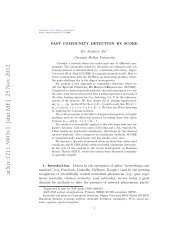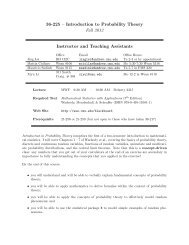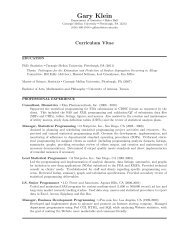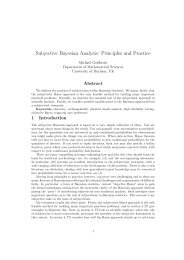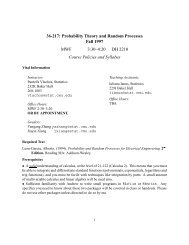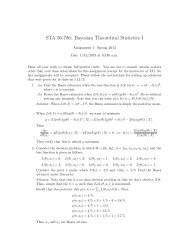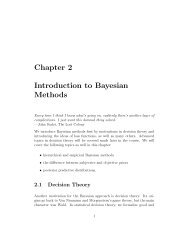A Threshold Autoregressive Model for Wholesale Electricity Prices
A Threshold Autoregressive Model for Wholesale Electricity Prices
A Threshold Autoregressive Model for Wholesale Electricity Prices
You also want an ePaper? Increase the reach of your titles
YUMPU automatically turns print PDFs into web optimized ePapers that Google loves.
The extensive literature on the study of electricity prices includes varied attempts to capture the<br />
spiky behavior in electricity price series. Kellerhals [11] discusses some stochastic volatility models,<br />
but does not offer a specific treatment of the electricity spikes. Moreover, there exist stochastic<br />
jump-diffusion models such as the one set <strong>for</strong>th by Ethier and Dorris [8] (hence<strong>for</strong>th, the E&D<br />
model) that combine a mean-reverting component and a positive jump term modeled according to<br />
a Poisson process (see also [2]). However, this assumes that the rate of mean reversion is the same<br />
throughout the price series, regardless of whether spikes are present or not. Additionally, there<br />
exist models that separate the mean-reversion in electricity prices from the spikes (Huisman and<br />
Mahieu [10]) via a regime jump model. In this case, if the prices spike up to a “jump regime”, they<br />
must immediately return to the “mean-reversion regime.” However, there is no study of the rate<br />
of mean-reversion in the presence of spikes, and how that might differ when there are no spikes.<br />
Deng [7] details various stochastic models <strong>for</strong> electricity prices, which include the jump-diffusion<br />
and regime switching types mentioned above, and also a stochastic volatility model. There is also<br />
discussion on how these models are applicable in pricing derivative securities. However, procedures<br />
to estimate parameters in these models would not be straight<strong>for</strong>ward to implement.<br />
In this article, we propose a variant of a first-order threshold autoregressive model (TAR(1)) <strong>for</strong><br />
wholesale electricity prices. (For discussion of TAR models, see, e.g., Tong [16], or, <strong>for</strong> the<br />
continuous-time versions of these models, Stramer, Brockwell, and Tweedie [15].) In addition to<br />
accounting <strong>for</strong> spikes and allowing <strong>for</strong> a temperature-driven effect, the model allows the threshold<br />
to be time-varying. Effectively, it allows the mean-reversion parameter to change in the presence<br />
of spikes. (Alvaredo and Rajaraman [1] noted this phenomenon, but they did not make a specific<br />
proposal <strong>for</strong> modeling it. In fact, to the authors’ knowledge, the literature does not contain analyses<br />
focusing on how the rate of mean-reversion might depend on the price level.) We estimate model<br />
parameters using a Markov chain Monte Carlo (MCMC) procedure, and compare our model to the<br />
E&D model, showing that our model provides a better fit to wholesale electricity prices collected<br />
in Allegheny County, Pennsylvania over a three-year period.<br />
The paper is organized as follows. Section 2 describes the data set, and discusses several important<br />
features. In Section 3, we construct the model <strong>for</strong> the data, and describe the fitting procedure. A<br />
discussion of the fitted model is given in Section 4, while Section 5 gives concluding remarks.<br />
2 Description of Data<br />
2.1 The <strong>Wholesale</strong> <strong>Electricity</strong> Price Data<br />
We consider the maximum daily wholesale electricity prices in Allegheny County, Pennsylvania,<br />
collected over the three-year period from January 1999 to December 2001. The data were taken<br />
from www.pjm.com, a website that publishes wholesale electricity prices <strong>for</strong> regions in the Mid-<br />
Atlantic. We choose to use the maximum daily price in order to preserve the effects of the spikes<br />
in the price process (typically the spikes only last <strong>for</strong> a few hours). The maximum daily prices and<br />
their logs are shown, respectively, in Figures 1 and 2.<br />
2



